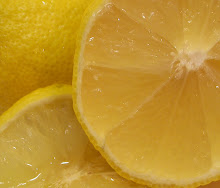Composting101.com provides a great resource for someone just getting into composting or seasoned pros looking for new ideas.
Here are their top 25 composting tips:
1. Grass clippings add necessary nitrogen to a compost pile, but be sure to mix with the "brown" materials that add carbon. Both are necessary for quick decomposition and rich compost. Piles made up of just grass will compact, slow down and start to stink.
(See Composters.com, Organic Compost Maker and Ultra-Concentrated Liquid Compost Accelerator)
2. Do not compost fats, pet droppings, or animal products. They will attract pests to the pile and can spread disease.
(See, Composters Pet Waste Products for easy disposal solutions.)
3. Newspaper or plain white paper from the computer is excellent for composting - just remember to shred it first to speed up the process.
4. Got compost? When finished it should look, feel and smell like rich, dark soil. You should not be able to recognize any of the items you put in there.
5. Worms love coffee grounds!
(See, extensive collection of red worms and vermiculture supplies.)
6. If adding ashes to your compost bin, do so sparingly. They are alkaline and affect the pH of the pile. In contrast, acidic materials include pine needles and oak leaves.
7. Plants that have been treated with pesticides and/or herbicides (weeds and lawn clippings) should be avoided.
8. The microbes responsible for breaking down your compost pile need a balance of nitrogen and carbon. Nitrogen comes from green materials such as food scraps, manure, and grass clippings. Carbon comes from brown materials such as dead leaves, hay, wood chips and shredded newspaper. A ratio that contains equal portions of both and is well mixed works best.
9. Algae and seaweed make excellent additions to your compost pile. Be sure to rinse off any salts before using.
10. Finished compost is usually less than half the volume of the materials you started with, but it's much denser.
11. Keep your compost pile in a black plastic bin and in direct sunlight to continue the composting process through the winter. Hay bales can be used to further insulate the pile.
(See compost bins and accessories)
12. Wooden pallets make excellent compost bins. Start with one pallet on the ground. Drive two metal stakes into each side. Slide additional pallets over each support and you have a bin ready for compost.
(See compost corral corners)
13. Straw is an excellent source of carbon for your compost pile. However, it may contain weed seeds, so make sure the pile is "cooking" properly.
14. Compost decomposes fastest between 120 and 160 degrees F. Decomposition will occur at lower temperatures, but it takes much longer.
(See Green Johanna Hot Komposter, for composting in colder climates)
15. The perfect size for a compost pile is one that is at least 3' x 3' x 3'. It's not only a manageable size to turn, but it's ideal for retaining heat while still allowing air flow.
(See, heavy duty pitch fork for compost aeration.)
16. For faster composting keep your pile or compost bin in direct sun.
17. Don't throw away your kitchen waste in the winter - try an indoor composter.
(See kitchen scrap mini- indoor compost bins, in green plastic, stainless steele, or white porcelain.
18. Compost piles should remain damp but not too wet. As you build your compost pile, make sure that each layer is moist as it is added. The surface should also remain damp (think of a wrung out sponge), especially during the summer months.
19. Does your compost pile smell? It's probably due to a large number of anaerobic microbes, which are working hard to break down your compost, but creating a smelly situation in the process. To cut down on the anaerobic process, aerate your pile regularly, creating air spaces and limiting the anaerobic microbes while stimulating the less stinky aerobic microbes.
(See Metal Pile Turner and Aerator for additional compost bin aeration)
20. Help start a new compost pile with aged manure, cottonseed meal, alfalfa meal, blood meal, or compost starter. They are rich in nitrogen and help jump-start the microbes responsible for breaking down organic matter into compost.
21. Anything that was living at one time is great for compost bins. Think of leaves, vegetables, and grass clippings.
22. Compost piles can either be layered - thin layers of alternating greens and browns, or they can all be thrown in together and mixed well. Either way works!
23. Soak finished compost in water to "brew" compost "tea," a nutrient-rich liquid that can be used for foliar feeding or for watering plants in your garden, backyard, or houseplants.
24. Apply finished compost to your garden about 2-4 weeks before you plant, giving the compost time to integrate and stabilize within the soil. Click here for a guide to vegetable gardening.
25. For faster results, use a compost turner every two weeks to aerate your pile.
(See variety of compost tumblers to best suit your needs.)
via - Composting101.com
Monday, December 15, 2008
Subscribe to:
Post Comments (Atom)




No comments:
Post a Comment